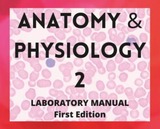
Laboratory manual for undergraduate Anatomy & Physiology 2
- Subject:
- Anatomy/Physiology
- Biology
- Health, Medicine and Nursing
- Material Type:
- Activity/Lab
- Reading
- Teaching/Learning Strategy
- Textbook
- Author:
- Julie Robinson
- Date Added:
- 07/30/2022

Laboratory manual for undergraduate Anatomy & Physiology 2

Biology is designed for multi-semester biology courses for science majors. It is grounded on an evolutionary basis and includes exciting features that highlight careers in the biological sciences and everyday applications of the concepts at hand. To meet the needs of today’s instructors and students, some content has been strategically condensed while maintaining the overall scope and coverage of traditional texts for this course. Instructors can customize the book, adapting it to the approach that works best in their classroom. Biology also includes an innovative art program that incorporates critical thinking and clicker questions to help students understand—and apply—key concepts.

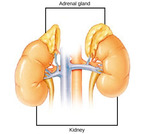
By the end of this section, you will be able to:Describe the role of different glands in the endocrine systemExplain how the different glands work together to maintain homeostasis

By the end of this section, you will be able to:Explain how hormones workDiscuss the role of different types of hormone receptors


By the end of this section, you will be able to:Explain how hormones regulate the excretory systemDiscuss the role of hormones in the reproductive systemDescribe how hormones regulate metabolismExplain the role of hormones in different diseases
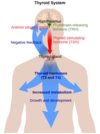
By the end of this section, you will be able to:Explain how hormone production is regulatedDiscuss the different stimuli that control hormone levels in the body

By the end of this section, you will be able to:List the different types of hormonesExplain their role in maintaining homeostasis

This course addresses the challenges of defining a relationship between exposure to environmental chemicals and human disease. Course topics include epidemiological approaches to understanding disease causation; biostatistical methods; evaluation of human exposure to chemicals, and their internal distribution, metabolism, reactions with cellular components, and biological effects; and qualitative and quantitative health risk assessment methods used in the U.S. as bases for regulatory decision-making. Throughout the term, students consider case studies of local and national interest.
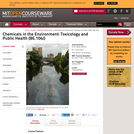
This course addresses the challenges of defining a relationship between exposure to environmental chemicals and human disease. Course topics include epidemiological approaches to understanding disease causation; biostatistical methods; evaluation of human exposure to chemicals, and their internal distribution, metabolism, reactions with cellular components, and biological effects; and qualitative and quantitative health risk assessment methods used in the U.S. as bases for regulatory decision-making. Throughout the term, students consider case studies of local and national interest.

In this activity, students are divided into a group of hormones and a group of receptors. The hormones have to find their matching receptors, and the pair, once matched, perform a given action. This activity helps students learn about the specificity of hormone-receptor interactions within the endocrine system.
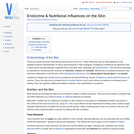
There are various hormones that influence the structure of the skin. These influences may be made apparent by the repeated long-term administration of various glucocorticoids or their analogues. Endogenous imbalances are generally seen in adult mature animals although congenital forms have been seen, especially with hypothyroidism. The hormones implicated as important for maintaining skin structure are thyroxine, cortisol and estradiol. Deficiencies or excessive production may result from abberations in the function of the hypothalamic-adrenal axis, the adrenal gland, thyroid gland or the gonads.
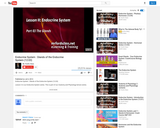
Video 3 in the endocrine system. We lists the glands of the endocrine system. We explain the functions of the glans in the endocrine system, including: Pituitary Gland, Thyroid Gland, Parathyroid Gland, Adrenal Gland, Sex (gonad) Gland, Pancreas, Pineal Gland and Hypothalamus.
Lesson 3 in our Endocrine System series. This is part of our Anatomy and Physiology lecture series.
If this video helps you please be sure to LST -like subscribe and tell your friends. Your support help us make more videos. For the complete series please visit http://mrfordsclass.net/
Videos in the skeletal system series:
-Introduction to the Endocrine System (12:01): http://youtu.be/2QIR7bCYqXQ
-Hormonal Action (12:02): http://youtu.be/FLsCXNPE2cg
-Glands of the Endocrine System (12:03): http://youtu.be/4aLoLVbtMkU
-Pituitary Hormones (12:04): http://youtu.be/AF1zVoDAHac

Video 2 in the Endocrine System. This video looks at how hormones work, their hormonal action.
Lesson 2 in our Endocrine System series. This is part of our Anatomy and Physiology lecture series.
If this video helps you please be sure to LST -like subscribe and tell your friends. Your support help us make more videos. For the complete series please visit http://mrfordsclass.net/
Videos in the skeletal system series:
-Introduction to the Endocrine System (12:01): http://youtu.be/2QIR7bCYqXQ
-Hormonal Action (12:02): http://youtu.be/FLsCXNPE2cg
-Glands of the Endocrine System (12:03): http://youtu.be/4aLoLVbtMkU
-Pituitary Hormones (12:04): http://youtu.be/AF1zVoDAHac
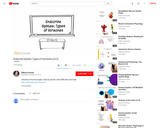
Short video covering types of hormones in the endocrine system for anatomy and physiology.

The first video in our endocrine system lesson focuses on the components of the endocrine system. We also define what a hormone is and go over the types of hormones: steroid, non-steroid, proteins and peptides and amines.
Lesson 1 in our Endocrine System series. This is part of our Anatomy and Physiology lecture series.
If this video helps you please be sure to LST -like subscribe and tell your friends. Your support help us make more videos. For the complete series please visit http://mrfordsclass.net/
Videos in the skeletal system series:
-Introduction to the Endocrine System (12:01): http://youtu.be/2QIR7bCYqXQ
-Hormonal Action (12:02): http://youtu.be/FLsCXNPE2cg
-Glands of the Endocrine System (12:03): http://youtu.be/4aLoLVbtMkU
-Pituitary Hormones (12:04): http://youtu.be/AF1zVoDAHac

In the previous video we showed the glands that make up the endocrine system. This video starts our study of the hormones produced by each gland. We kick off by looking at the hormones produced by the pituitary gland.
Lesson 4 in our Endocrine System series. This is part of our Anatomy and Physiology lecture series.
If this video helps you please be sure to LST -like subscribe and tell your friends. Your support help us make more videos. For the complete series please visit http://mrfordsclass.net/
Videos in the skeletal system series:
-Introduction to the Endocrine System (12:01): http://youtu.be/2QIR7bCYqXQ
-Hormonal Action (12:02): http://youtu.be/FLsCXNPE2cg
-Glands of the Endocrine System (12:03): http://youtu.be/4aLoLVbtMkU
-Pituitary Hormones (12:04): http://youtu.be/AF1zVoDAHac
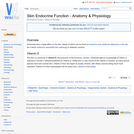
Hormones have a large effect on the skin, details of which can be found at endocrine and nutritional influences on the skin. As a result, endocrine associated skin pathology is relatively common.

Students learn how the endocrine system works and compare it to the mail delivery system. Students discuss the importance of communication in human body systems and relate that to engineering and astronauts.